Blog 22
10th – 14th July
Langar to Khorog (and return to Dushanbe)
Distance: 216km
Total Distance: 7075km
My journey through the Wakhan Valley began in Langar, where the Pamir River and the Wakhan River (that flows from the Wakhan Corridor in Afghanistan) meet to become the Panj River. The Wakhan Valley, as opposed to the Wakhan Corridor in Afghanistan, is the Tajikistan part of the Wakhan, a part of the Pamir and Hindu Kush mountains.
For centuries, the Wakhan Valley was an important principate of the famous Kushan, a great empire that extended from southeast Tajikistan to the Ganges Valley in India. The Kushan built several fortresses located on the top of very high hills, some of which I wanted to see. Historically, the region served as a dividing line between west and east Asia, so the valley was also an important Silk Road route. In the 20th century, it also marked a clear border between the Soviet Union and the British Empire.
Day 109: Langar to Yamchun – 41km
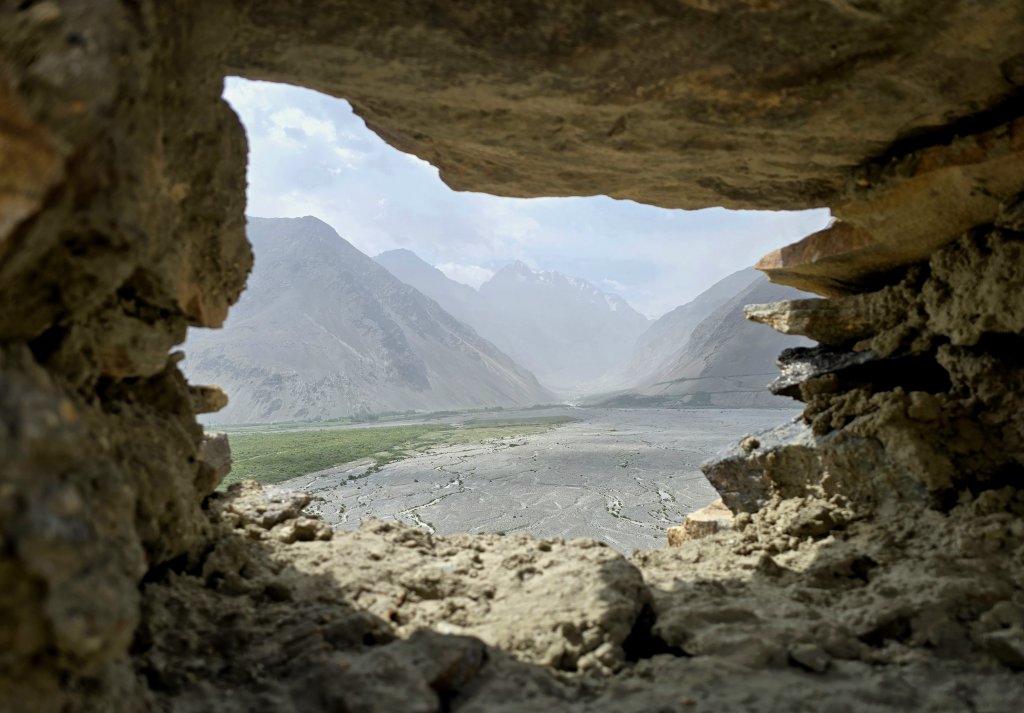
Rolling on from the high Pamirs, this was only a three day section that I hoped wouldn’t be so intense as I was pretty tired. Out of Langar I was only planning a short day to try to let my body catch up a bit. Heading out from the green, protected sanctuary of the village, the weather had other ideas. The majestic high mountainous walls that form the valley served to funnel gale-force winds up the Panj River. The road was terrible, a continuation from the road through Khargush Gorge that I rode the previous day. It was stony (loose and embedded stones), corrugated, sometimes sandy and there were a lot of steep climbs too. I struggled to average 11km-12km an hour.
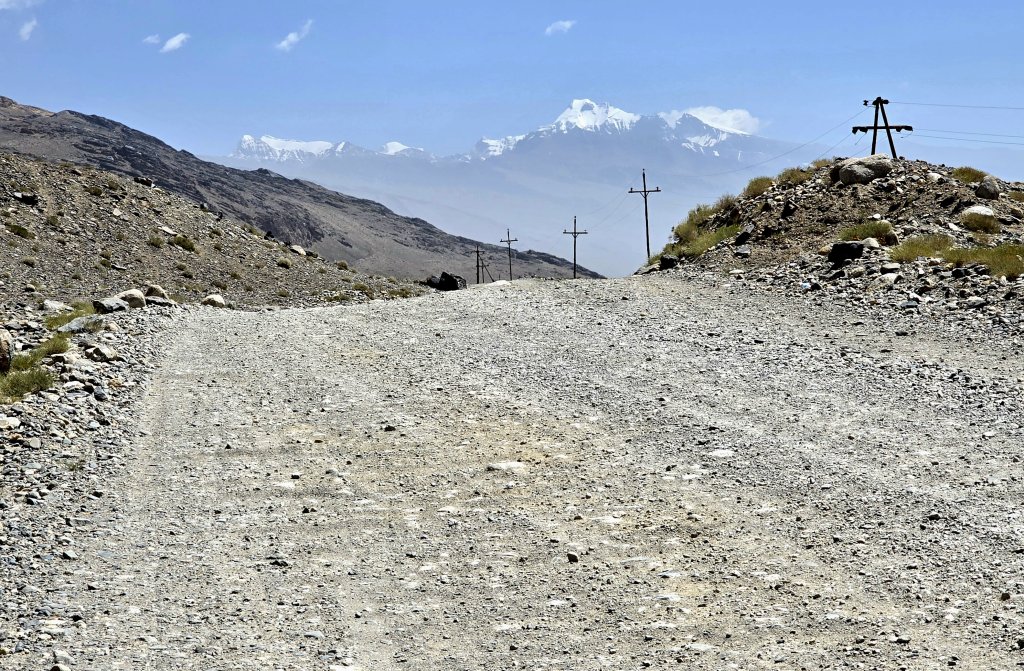
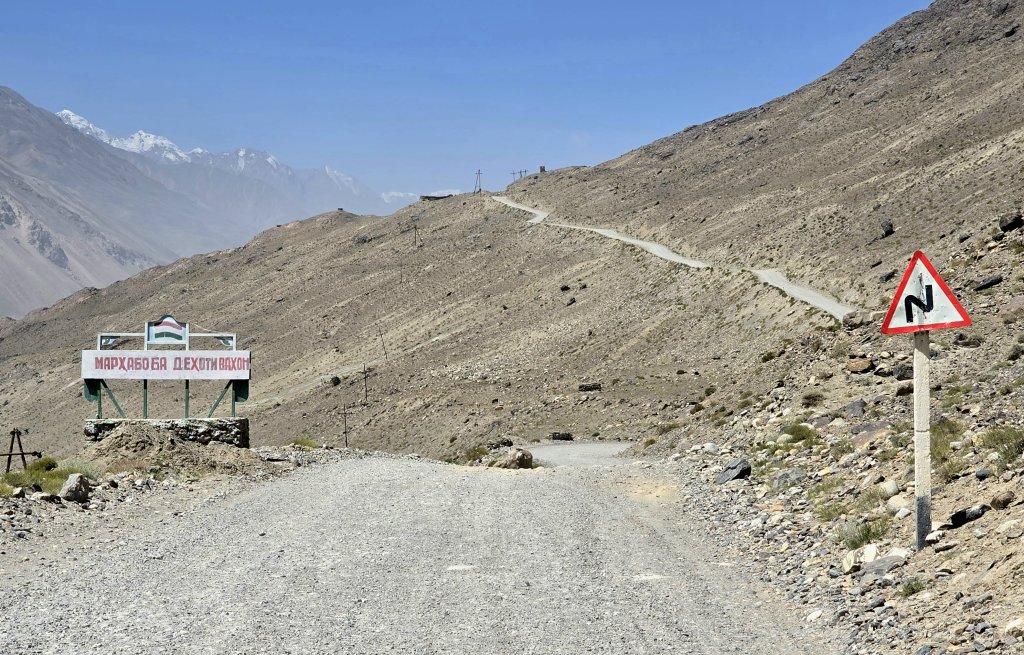
Just after lunch, I stopped for my 5km break, (I had to break my day into small sections to get through it) went to adjust my seat that had slipped down due to the rough road, and noticed a crack almost right through the middle of my seat tube. Lucky the seat didn’t snap completely while is was cycling! This was very alarming – a structural break in the frame. I could ride no further without it being fixed.
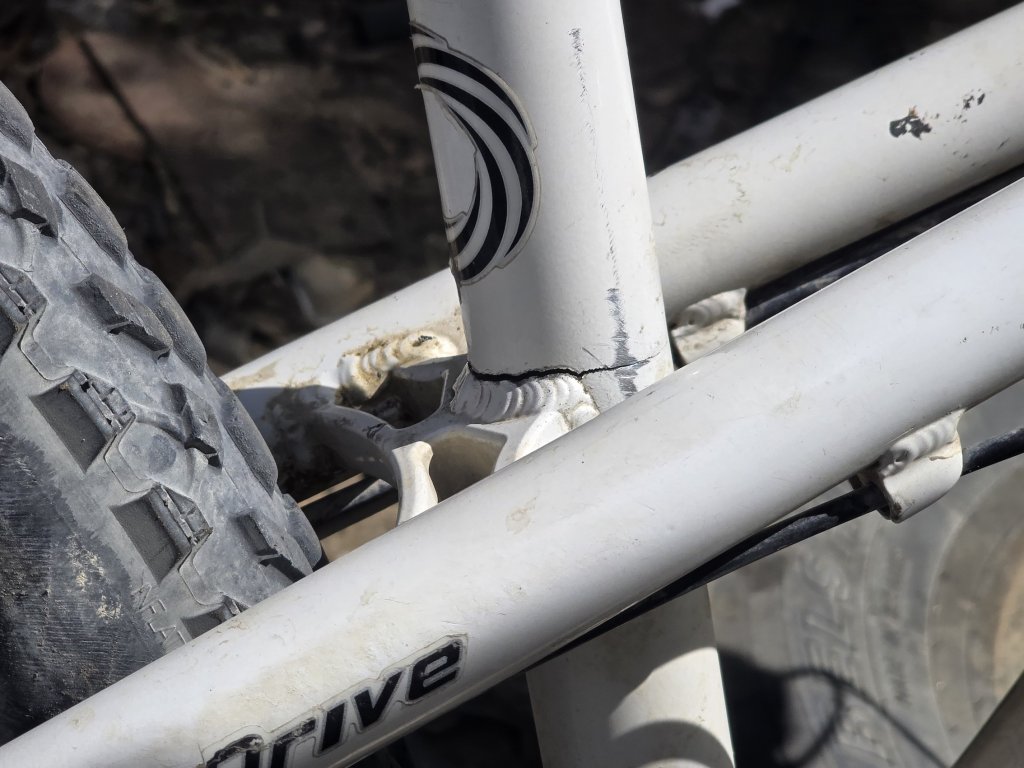
But what to do in the remote Wakhan Valley where there are few amenities. The bike is aluminium which requires specialist skills to weld. Karim asked around – he had a great suggestion to fit a piece of pipe inside the tube to act as a kind of splint. The first metal worker was out but we found another guy in a village 5km away who could help. His yard was full of apparent junk from old cars, air conditioners, pieces of pipe – anything that could be useful one day. He measured the seat tube and scouted around for a suitable piece of pipe which he found inside a hydraulic unit. He cut it out with an angle grinder and went to work.
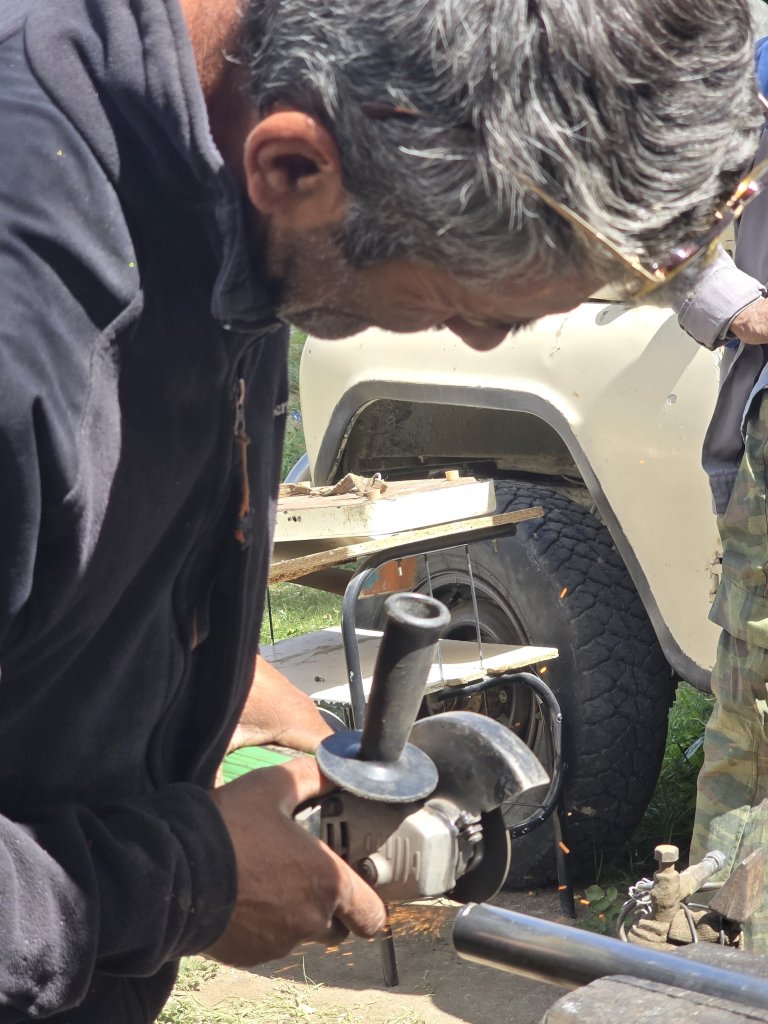
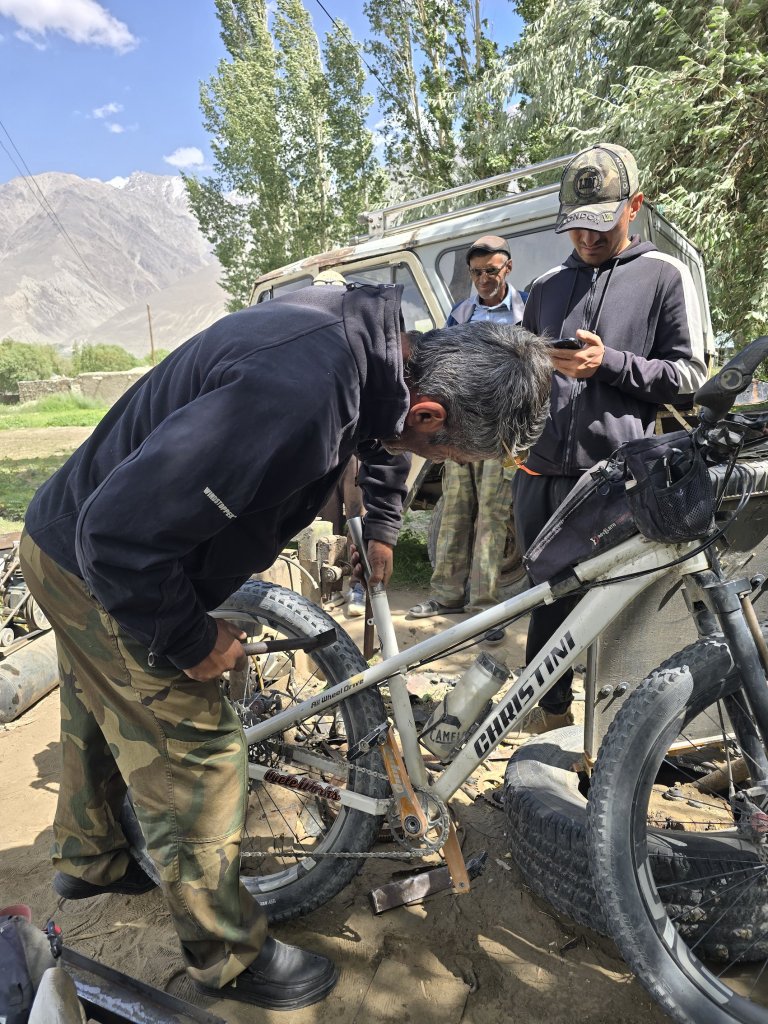
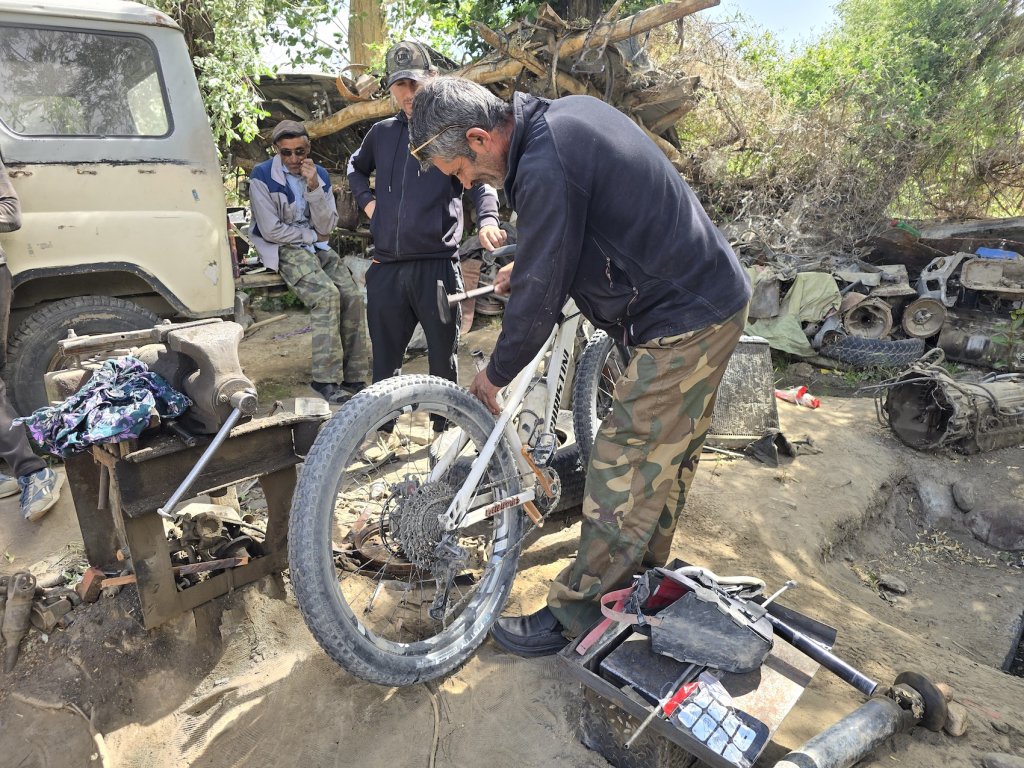
The bike temporarily fixed, enough to get through the Wakhan Valley and back to Dushanbe where it could be welded, I finished off the last 15km of my ride and we took the late afternoon to visit Yamchun Fort and some hot springs. This involved a steep climb away from the valley (we drove this) and gave amazing views over the valley.
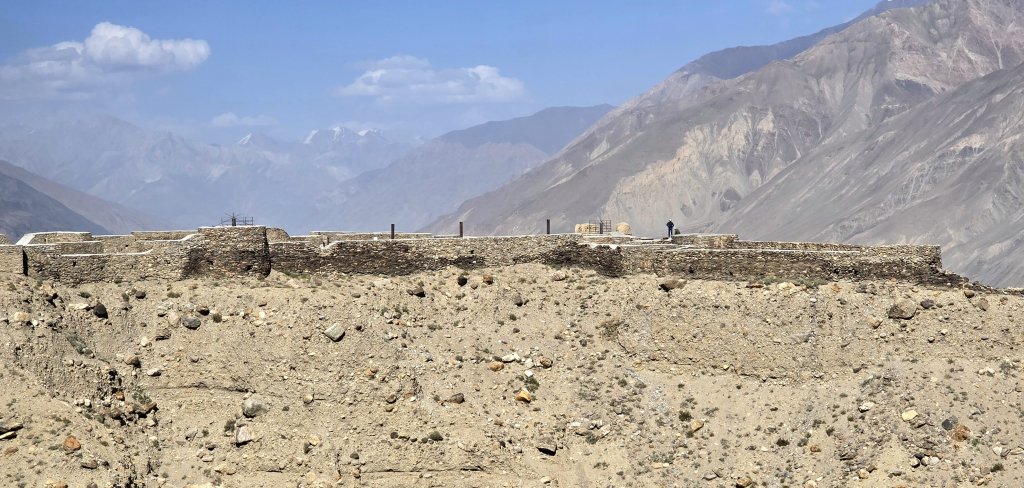
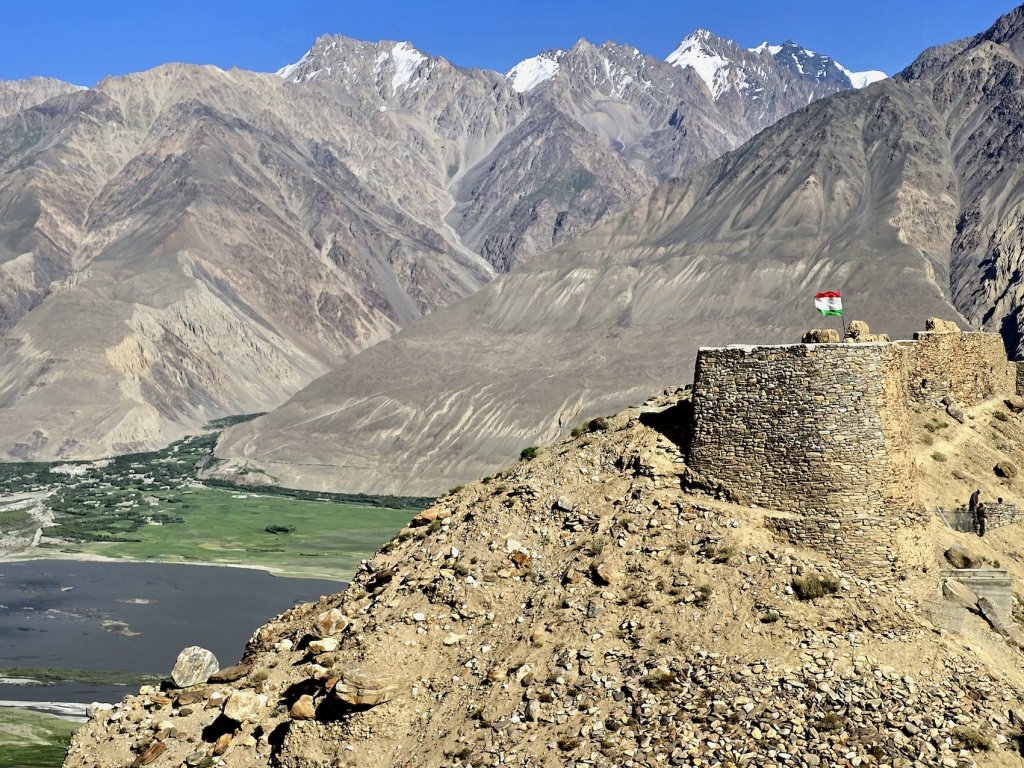
Day 110: Yamchun to Ishkashim – 72km
The road to Ishakshim was more of the same to start with, but during the day, there were more and more strips of the old Soviet made asphalt. The headwind nearly blew me off the road on the longest climb – back up to 2928m. 72km doesn’t seem much distance, but in these conditions, it was a full day. The last part was mostly old rough tarmac where I could move along pretty well. The valley narrowed into a gorge and then broadened as I neared Ishkashim.
High above the valley was another Kushan fort – Kala Forrtress – slightly older than Yamchun. It didn’t seem that significant from the roadside, but built on a rocky hill overlooking the valley, it must have been imposing to any would-be invader. The hill itself was a part of the design with surveillance turrets built into the rock giving views of all directions.
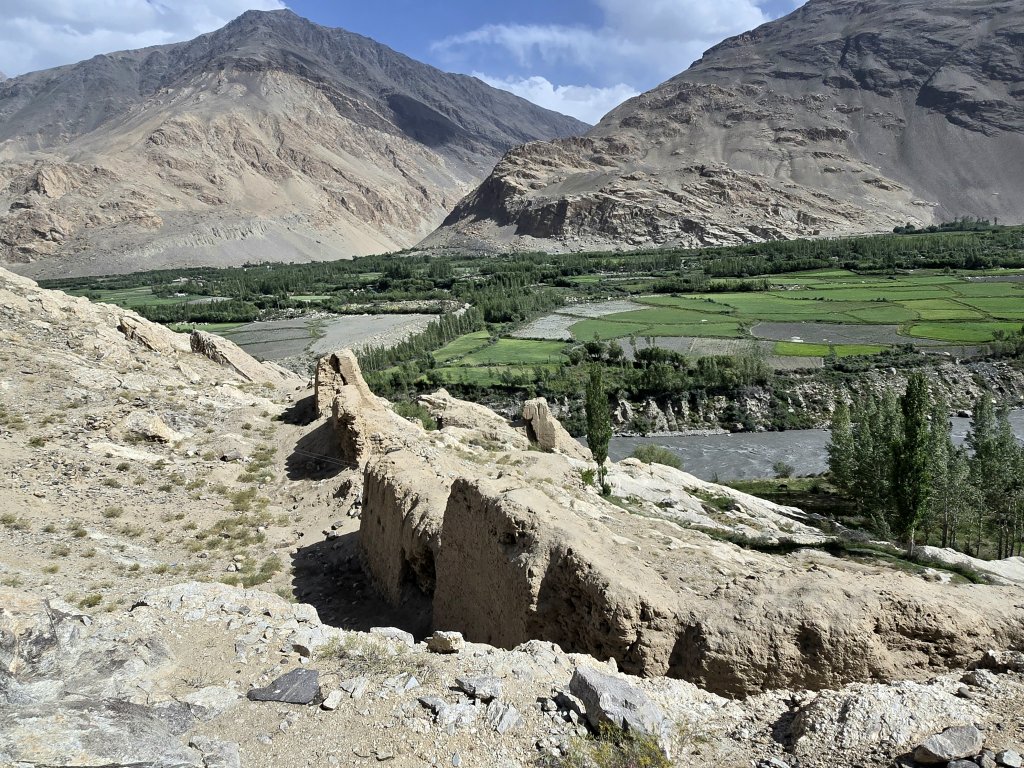
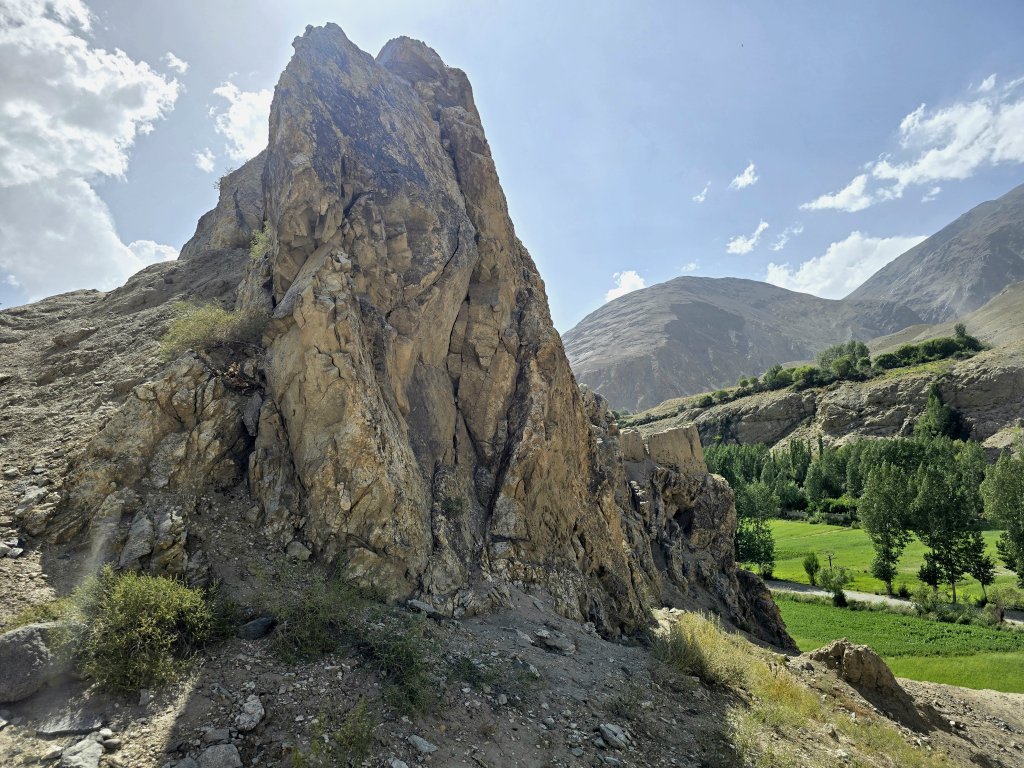
Day 111: Ishkashim to Khorog – 103km
Until the last few years, Ishkashim was a well-used border crossing between Tajikistan and Afghanistan. It is the crossing I had hoped to take until I learned it had been closed by the Taliban. Every Saturday, a market is held where Tajiks and Afghans can meet and trade. Security either side of the bridge is high. Travellers are sometimes allowed to cross, but we didn’t have time to wait another hour as I had to cycle to Khorog – a full day knowing the likely conditions.
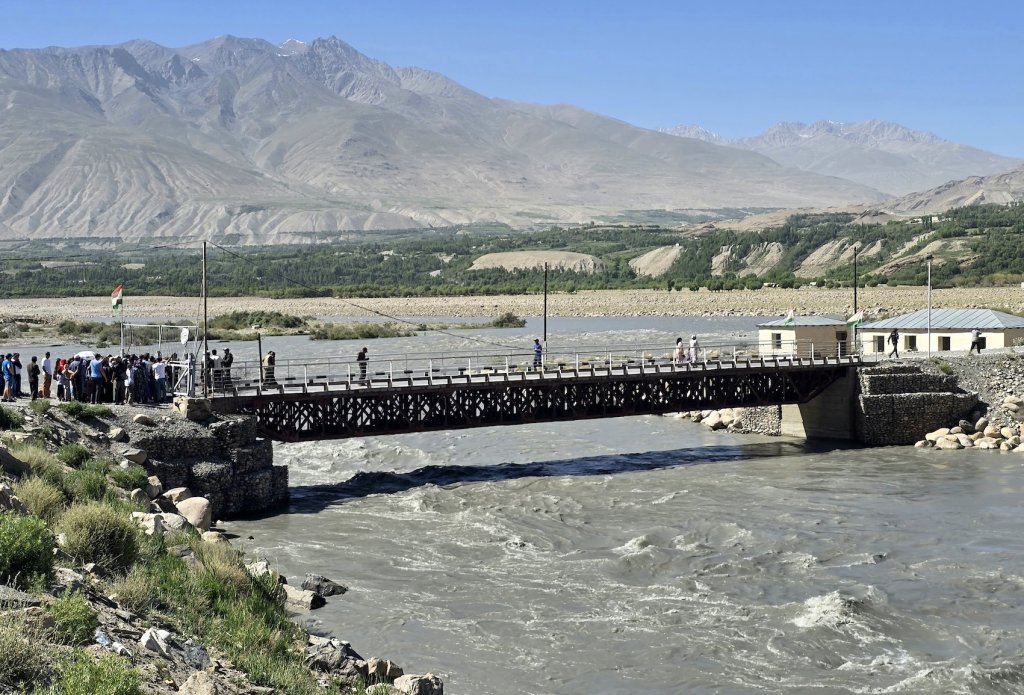
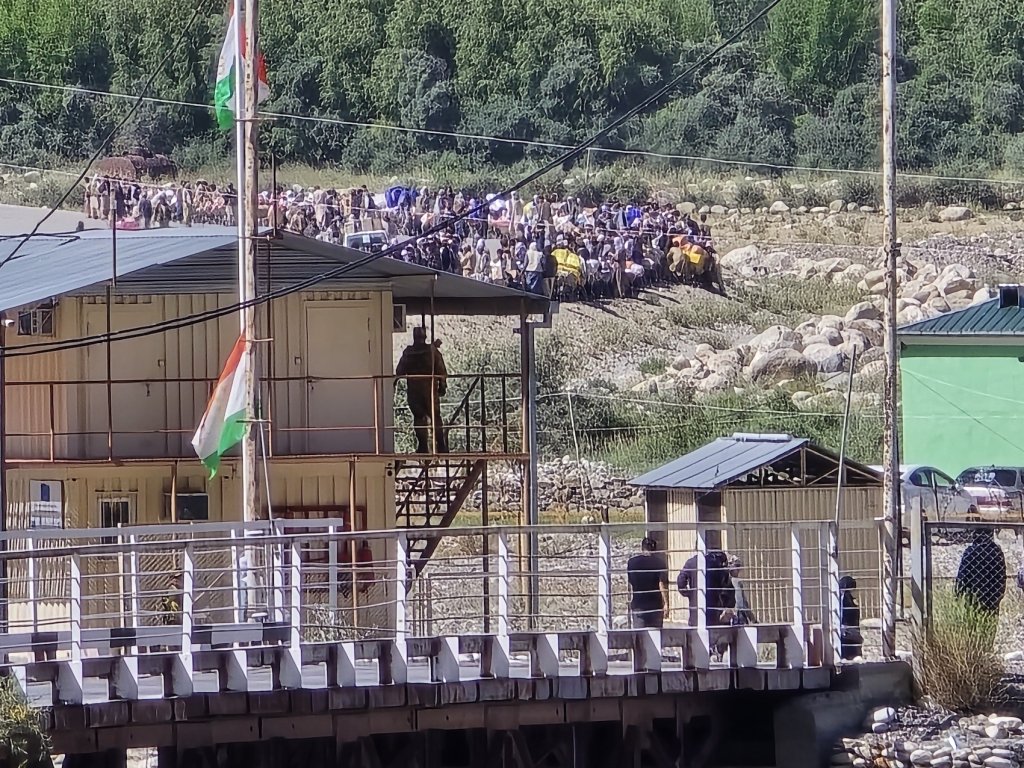
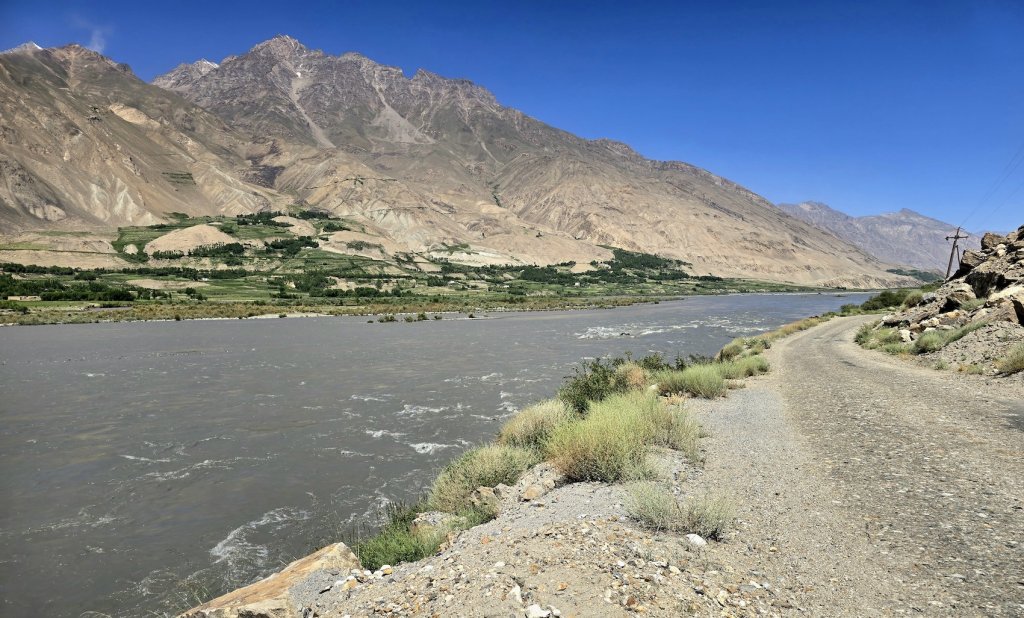
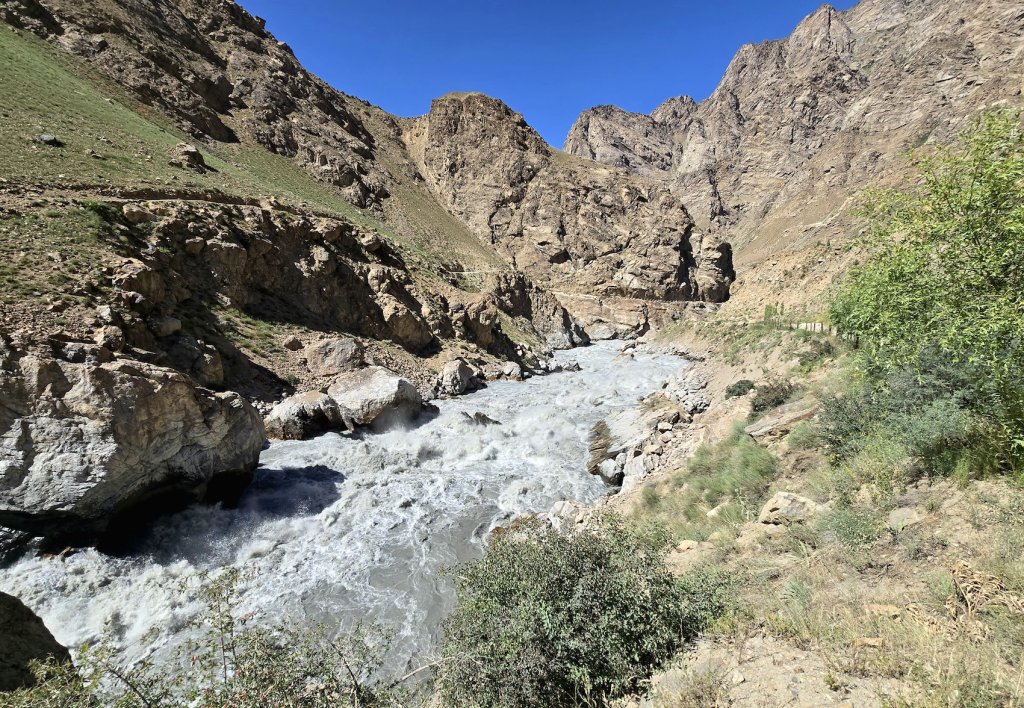
It was great to finally reach Khorog, the city where I started the big loop through the Pamirs. This was the end of this section of the expedition. Now Karim had a 10 hour drive to get back to Dushanbe, a route he is used to doing. He did a brilliant job. We arrived in Dushanbe a day ahead of my schedule, which was all very well because I needed the extra day to rest and sort out the final two phases of the expedition – through Kyrgyzstan and the Fergana Valley, and then the Wakhan Corridor in Afghanistan.
At the top of the to-do list was getting the bike welded.
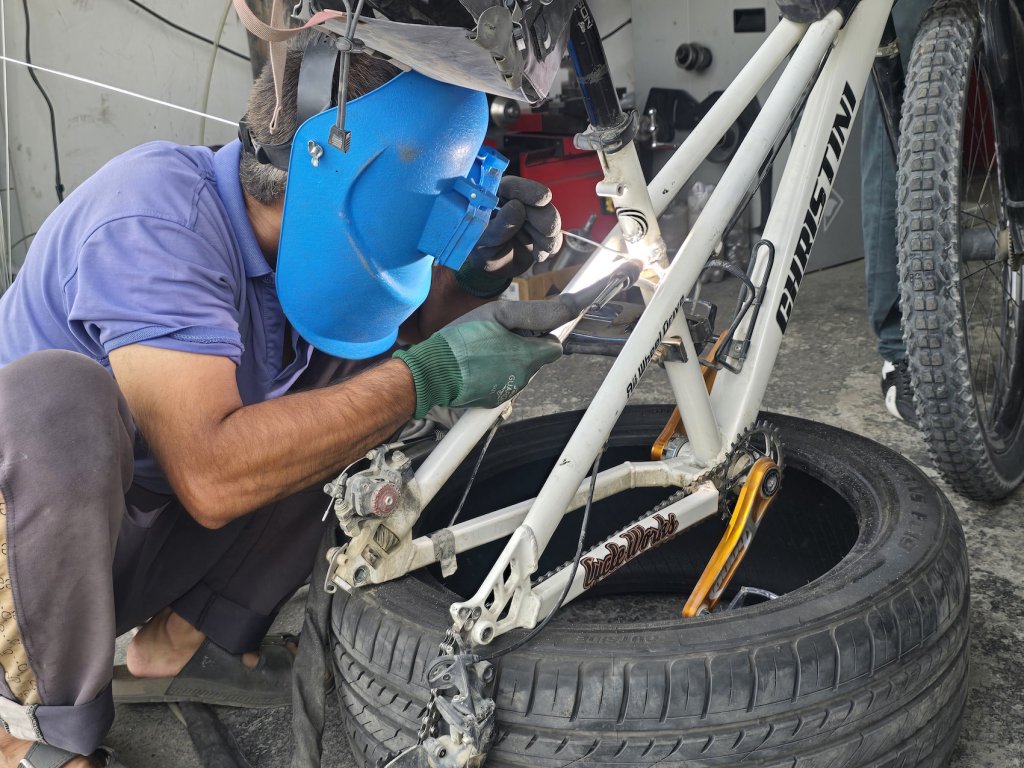
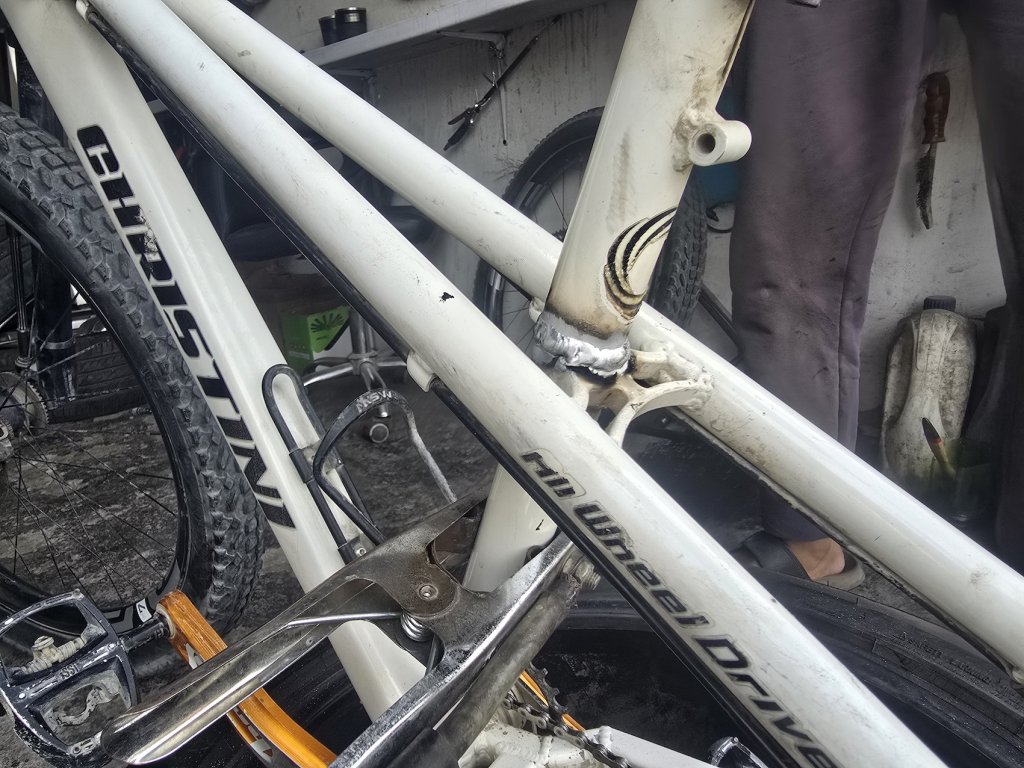
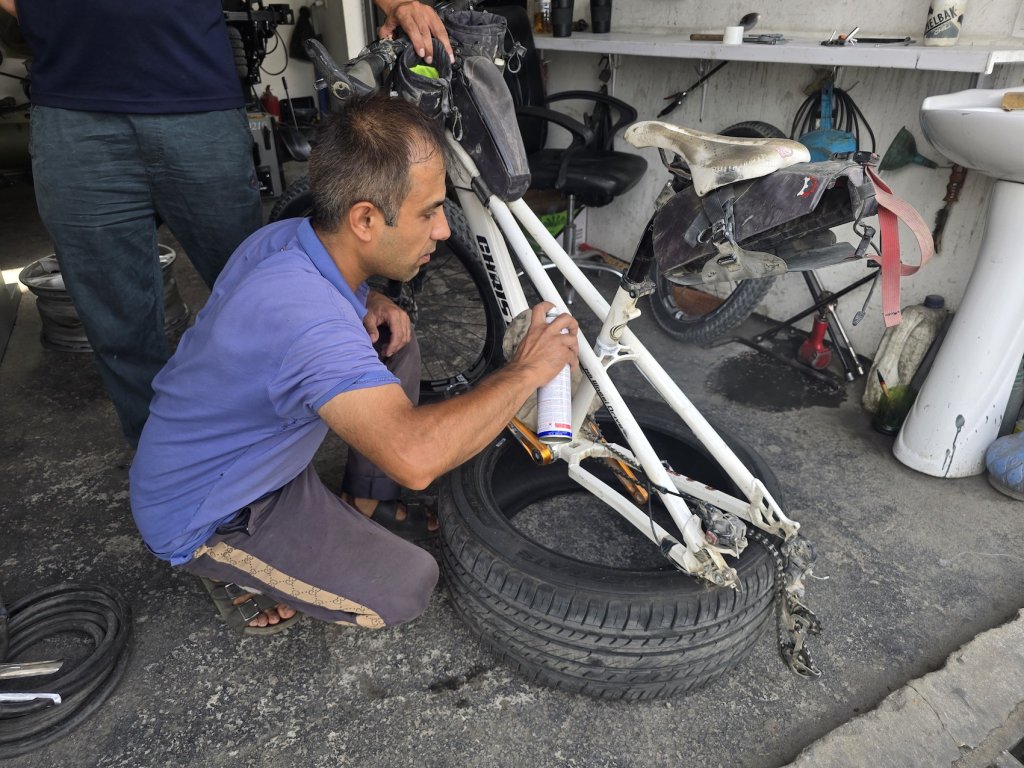
The next blog will be from Kyrgyzstan after my flight to Bishkek.
FOLLOW THE JOURNEY
Thanks to ZeroSixZero, you can open this URL on your phone and select “add to home screen” and the map will become and app. You can then keep updated in real time: https://z6z.co/breakingthecycle/central-asia
TAKE ACTION
Support my Water.org fundraiser to help bring safe drinking water and sanitation to the world: Just $5 (USD) provides someone with safe drinking water or access to sanitation, and every $5 donated to my fundraiser will enter the donor into the Breaking the Cycle Prize Draw. https://give.water.org/f/breakingthecycle/#
EDUCATION
An education programme in partnership with Exploring by the Seat of Your Pants, with contributions from The Royal Geographical Society and The Duke of Edinburgh’s International Award Australia. We have created a Story Map resource to anchor the programme where presentations and updates will be added as we go.









Hi Kate,
Wonderful that you had those helpful guys around to help with the temporary bike fix and that your plans weren’t impacted too much. Beautiful scenery again. I sure do admire your grit to climb and pedal on those tough road surfaces. Amazing to read of all you and your team are achieving in challenging conditions.
All the best,
Leanne
I had a downtube part like that. It was on an Asama folder. Not much earlier than that, I used it to ride the Going to the Sun road in Montana’s Glacier National Park. A break there could have been fatal. That reinforced my view that STEEL is the only material for a frame for rough touring. Steel is more comfortable and can be welded anywhere. It will laugh at rough roads like that, even if your body can’t!
Hi Kate and team,
Another inspiring blog….and exciting for me as i know that section also. I recall the Ishkashem market and am pleased that it still operates. Afghan men love it as the only place where they ever see women (from the Tajik side) unveiled and colourfully dressed.
You really have set yourself the most demanding of tasks and jouneys and you continue to be on schedule, even ahead despite days of headwinds, ascents in the poorest conditions of roads and higher than anticipated plus these falls onto rocks in rivers with bruises and worse.
Sometime please report on the prospects of a walking journey on the Afghan side of the Ishkashem to Khorog sweep. 20 years ago it looked as if there was some sort of goat path much of the way. I dont know anyone who has attempted the route.
Hello I am one the wakhan,Afghanistan citizen and I am interest to work with tourist and any person come to Afghanistan I would like to help and gauid theme.